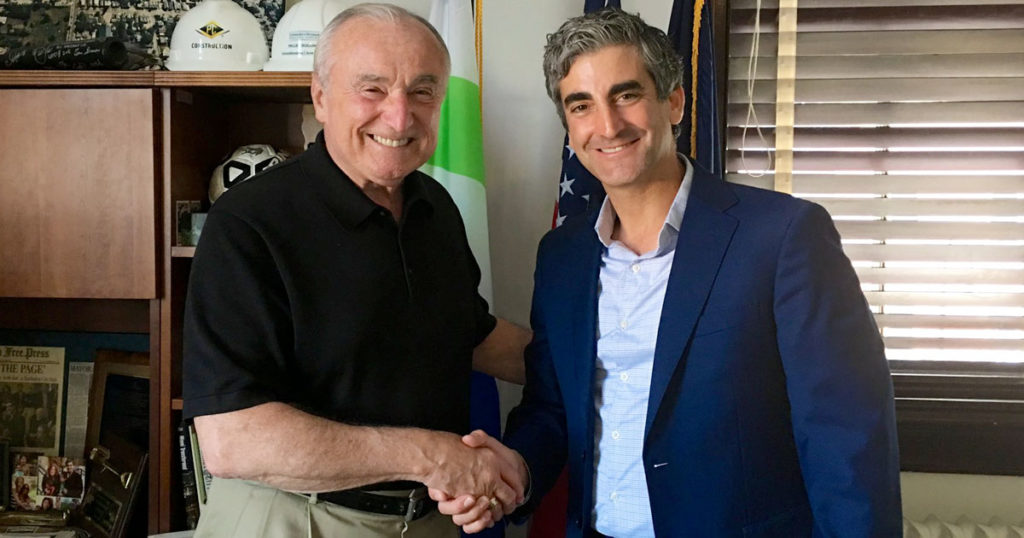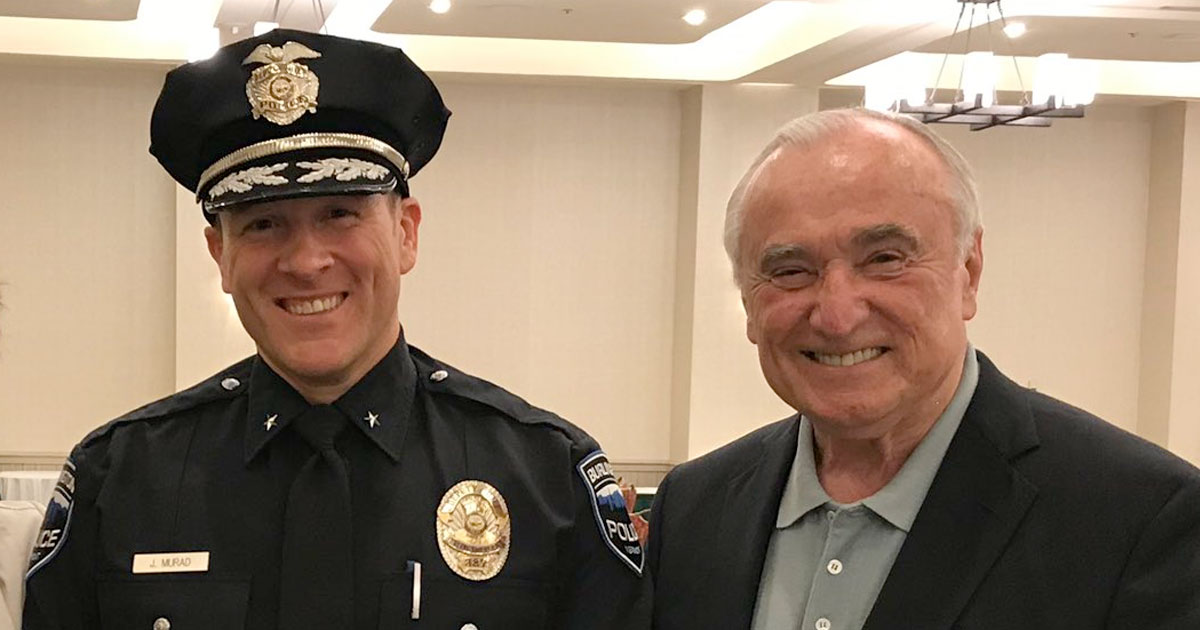As it becomes increasingly likely that Burlington Interim Police Chief Jonathan Murad will be Burlington’s next permanent police chief, residents should know what to expect. Murad’s history is tightly connected to former NYPD Chief Bill Bratton, whose record in New York City was fraught with ignoring police misconduct, using public relations to protect violent officers from consequences, and employing the broken windows policy to terrorize Black, Hispanic, and queer communities.
In November 2021, Burlington completed a national search for a new police chief. They had two applicants who met their minimum requirements, one of whom was the city’s current interim chief, Vermont-born Jonathan Murad. Mayor Miro Weinberger was not satisfied with the results and issued an ultimatum to the city council: the council must raise the chief’s salary and get an outside hiring consultant, or Weinberger will choose one of the two finalists as Burlington’s next police chief. Just before Christmas, with his demands not met, Weinberger chose to move forward with the two potential police chiefs.
This was quite the blow to Murad’s career trajectory, going from Chief Bill Bratton’s mentee and top public relations specialist in the NYPD to being an unwanted police chief in a small Vermont city of 45,000 people just five years later.
While Vermont media outlets have slowly grown more critical of Chief Murad after he was caught lying to the press and the public, Murad’s pre-Burlington career has been treated with little scrutiny.
Murad’s Upbringing and Career
Murad grew up in Underhill, living a comfortable life as the son of two tenured UVM professors. After a degree from Harvard, Murad attempted to become a successful Hollywood actor, typecast as a police officer or security guard. In four of his seven credits on IMDB, two roles were for police officers and two were for security guards.
Murad joined the NYPD in 2005, the same year that the New York Civil Liberties Union released a 69-page report about the violent tactics used by thousands of NYPD officers to harass and abuse protestors at the 2004 Republican National Convention.
Murad was not detached from these abusive tactics. According to a database on NYPD police misconduct, four complaints were made against Murad’s in 2007, including a stop-and-frisk and use of force. All of them were made by Black or Hispanic residents. But like other NYPD officers deeply entrenched in its violent culture, these complaints would not keep Murad from rising to the top of the NYPD.
As Bratton writes in his latest book, The Profession: “Jon Murad was not your usual cop. He had graduated from Harvard and spent several years in Los Angeles pursuing an acting career. He had worked in the newsroom at Newsweek but felt uninspired, and joined the NYPD at age thirty-two…He earned a second Harvard degree at the Kennedy School on a department scholarship. I gave him a six-rank promotion from sergeant to assistant commissioner [emphasis added], the police equivalent of jumping him from minor league A ball to the majors. When I needed words, I often looked to Murad.”
Pacifying the Public after Eric Garner’s Murder
In response to widespread protests about the murder of Eric Garner, Murad, as assistant commissioner, was tasked with creating the NYPD’s Office of Strategic Communications. His first and foremost task: pacifying the public after Eric Garner’s murder. This included working closely with the NBC series Brooklyn 99 to embed pro-police propaganda.
According to Murad’s Linkedin profile, he was “responsible for internal and external message management and Police Commissioner Bratton’s public remarks, and had a lead role in the department’s crisis communications. He also produced and oversaw the NYPD’s owned media such as social media, publications, graphics, video, and collateral.”

The Creation of Precision Policing
Bratton is known for his first stint in New York City in the 1990s, working with Mayor Rudolph Guiliani to institute the racist and classist “broken windows” theory. Broken windows is a zero-tolerance approach to petty, often victimless crimes such as loitering or public intoxication based on the assumption that the non-enforcement of low level crimes creates conditions that encourage higher level crimes. This assumption has never been borne out by research, and its proponents have never been able to answer the significant countervailing evidence provided in the years since its inception.
In 2014 Bratton returned to the NYPD amidst growing corruption and public discontent over broken windows and stop and frisk. Over the next two years, while facing a federal corruption probe, Bratton and Murad came up with a strategy to “reform” broken windows and gave it a new name: Precision Policing.
Precision Policing is an updated version of broken windows, including the use of the racially-tinged data collecting Compstat System, but instead of stopping and frisking every person of color, police use cherry-picked data to target their harassment. According to a Manhattan Institute chapter co-authored by Bratton and Murad : “The two most important components of Precision Policing are focused crime-and-disorder enforcement and Neighborhood Policing.”
The chapter includes breathtaking arguments, such as: “In practice, however, community policing was often separated from crime-fighting. You don’t push Mrs. Smith on the ‘shared responsibility’ of public safety when Tommy has an Uzi and a murder occurs in the city every four hours. D-Day comes before the Marshall Plan. Neighborhoods had to be made secure before cops could ask people to come out and work with them.”
Immediately, there was criticism from NYC civil rights groups about Precision Policing’s vague and meaningless terminology. Communities United for Police Reform stated that “Commissioner Bratton was no reformer to communities impacted by abusive and discriminatory policing, no matter how much he and his supporters attempt to promote that fallacy.”
New York Civil Liberties Union senior policy counsel Michael Sisitzky said, “It’s a term that kind of covers up the fact that it often pertains to some of the very same disparate and aggressive policing of communities of color that we’ve seen with other NYPD policing tactics.”
While Murad claimed in the New York Post that Precision Policing kept NYC safer, under his watch as interim chief of Burlington, Murad has claimed, falsely, an increase in crime.
Jumping Ship
When Bratton resigned from the NYPD after prolonged disagreements with self-described progressive Mayor Bill De Blasio, Murad jumped ship to join his mentor. Bratton became executive chairman of Teneo Risk, a global consulting firm, and Murad was subsequently hired as Bratton’s chief of staff.
Most recently, Bratton joined the board of Mission Ready Solutions in 2020, which creates, manufactures, and sells law enforcement and military equipment. Murad joined the firm as an advisor in July 2021.
When NYPD Deputy Inspector Brandon del Pozo was nominated by Mayor Weinberger to be Burlington’s next police chief in 2015, hundreds of protestors showed up to city hall to demand that Burlington not be influenced by the corrupt, violent, and racist history and culture of the NYPD. Three years later, Murad moved back to Vermont and del Pozo hired him as an assistant chief. While del Pozo uses progressive language for political expediency and as a personal brand, Murad doesn’t bother with even a facade of reformism. As Bill Bratton said, Murad is a “cop’s cop.”



